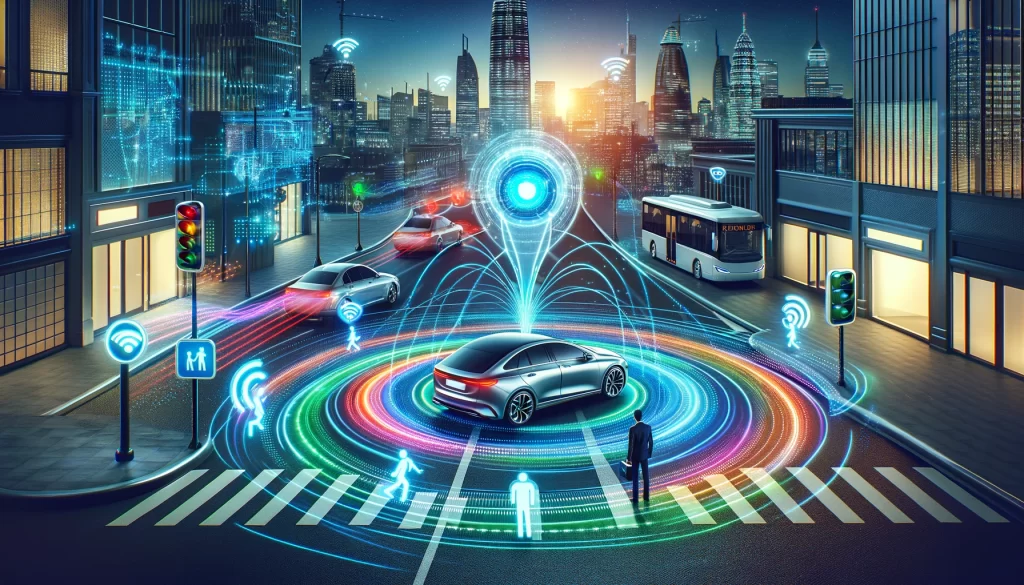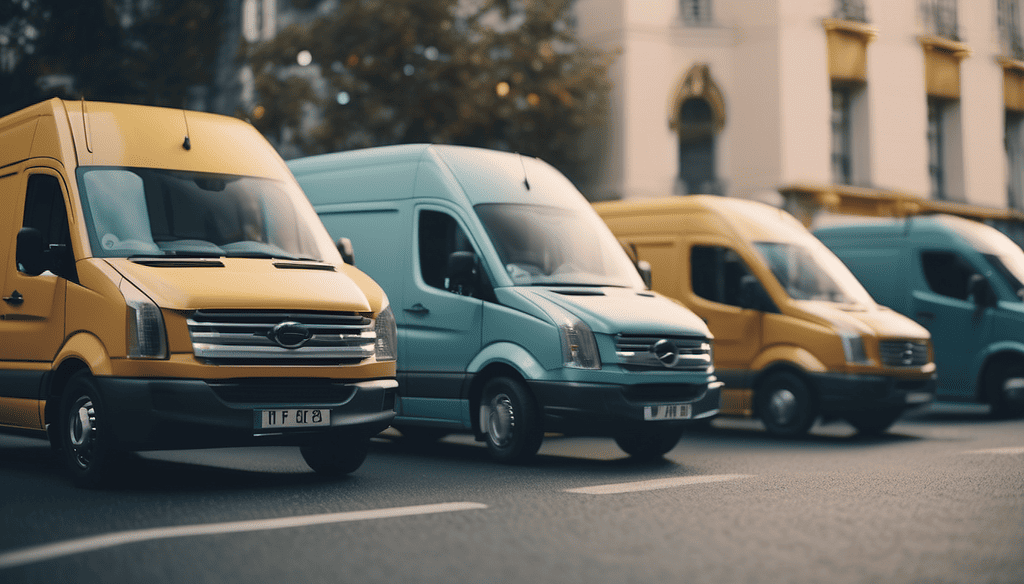V2X COMMUNICATION STANDARDS AND IMPLEMENTATION: NAVIGATING THE DSRC VS. C-V2X TECHNOLOGY LANDSCAPE
V2X communication standards are a critical component in the rapidly advancing terrain of intelligent transportation systems. They facilitate the seamless exchange of information between a vehicle and any entity it may interact with, including other vehicles, pedestrians, infrastructure, and the network. This complex, interconnected dialogue aims to enhance traffic efficiency, reduce congestion, and, most importantly, increase safety. The main contenders in this arena are DSRC, which bases its technology on Wi-Fi, and C-V2X, which leverages cellular networks, each with its proponents and unique technical capabilities.
Unpacking the nuances between DSRC and C-V2X reveals an ongoing debate grounded in technological merits, legislative direction, and industry adoption. Dedicated Short-Range Communications (DSRC) have been traditionally favored in North America due to its early development and established standards. On the other side, Cellular Vehicle-to-Everything (C-V2X) offers direct and network-based communications, promising enhanced reliability and a more prevalent role in future 5G networks.
As with many aspects of technology poised at the brink of standardization, the trajectory of V2X is shaped by both extensive trials and policy-making. Current trends show a keen interest in harmonizing these technologies for global application, with implementation strategies being rolled out across the globe. The implications of chosen standards will have far-reaching effects on the future of autonomous and connected vehicles, necessitating a deep understanding of their workings, potential, and limitations.
Overview of V2X Communication Standards
The V2X (Vehicle-to-Everything) communication standards are pivotal for enabling intelligent and safer vehicular networks. They define the protocols that allow vehicles to communicate with each other, with pedestrians, infrastructure, and the wider network.
Evolution of Vehicle-to-Everything Technologies
The genesis of V2X technologies was aimed at improving road safety and traffic efficiency by enabling real-time communication between vehicles and their surroundings. Initially, Dedicated Short-Range Communications (DSRC) emerged as the forerunner, relying on IEEE 802.11p standards for wireless communication in vehicular environments. The DSRC operates in a 75 MHz band reserved for automotive purposes in the 5.9 GHz spectrum and has been the subject of extensive research and deployment trials. The evolution continued with the advent of Cellular Vehicle-to-Everything (C-V2X), which includes technologies like LTE-V2X and the upcoming 5G NR V2X, exploiting cellular networks’ infrastructure to offer improved coverage, reliability, and latency.
Comparison of DSRC and C-V2X Standards
Both DSRC and C-V2X are touted for their potential to improve vehicular communication, but they differ fundamentally in their technological approach and capabilities:
DSRC
Pros:
- Established technology with a range of supported devices
- No reliance on cellular network infrastructure
Cons:
- Limited range and potential congestion in high-traffic scenarios
- Susceptible to line-of-sight issues and obstructions
C-V2X
Pros:
- Greater range and reliability by leveraging cellular networks
- Better performance in non-line-of-sight conditions
Cons:
- Dependency on cellular network availability and coverage
- Potential additional costs associated with cellular services
The tutorial on 5G NR V2X Communications underlines the significant advancements of the Cellular V2X standards, anticipating the integration with future 5G networks, which are set to offer even higher data rates, lower latency, and increased capacity. Meanwhile, discussions and deployments of DSRC continue, despite being challenged by the emergence of C-V2X.
 Technical Aspects of V2X Communication
Technical Aspects of V2X Communication
Vehicle-to-everything (V2X) communication is a pivotal technology for the advancement of autonomous driving, traffic management, and safety features. It encompasses several protocols and network infrastructures, particularly DSRC (Dedicated Short-Range Communications) and C-V2X (Cellular Vehicle-to-Everything). These technologies facilitate the exchange of information between vehicles and any entity that may affect or may be affected by the vehicle.
DSRC Protocol Details
DSRC Protocol operates in a dedicated spectrum of 5.9 GHz set aside by regulatory authorities. It is characterized by:
- Low latency communication, typically around 25 milliseconds.
- Short to medium-range capability, effective up to approximately 300 meters.
- Utilization of IEEE 802.11p standard for wireless access in vehicular environments (WAVE).
The protocol supports a wide range of applications, from basic message exchanges like safety warnings to cooperative adaptive cruise control. The bandwidth allotted for DSRC is divided into service channels for various types of messages; for instance, one channel may be reserved for vehicle-to-vehicle (V2V) communication, while another might be dedicated to vehicle-to-infrastructure (V2I) exchanges.
C-V2X Network Infrastructure
C-V2X Network leverages cellular technology, including LTE and upcoming 5G networks. It features:
- Enhanced range compared to DSRC, offering potential for broader infrastructure communication.
- Improved reliability and latency with 5G, facilitating advanced use cases such as coordinated driving and platooning.
- Compatibility with existing cellular network infrastructure, allowing for straightforward scalability.
C-V2X consists of two types of communication: direct communication (PC5 interface) that supports V2V, V2I, and vehicle-to-pedestrian (V2P) without needing cellular service, and network communication (Uu interface) that uses the cellular network for vehicle-to-network (V2N) services. This infrastructure also supports a range of frequency bands, determined by regional cellular standards and operator deployments.
Implementation Strategies and Challenges
Implementing V2X communication is a multifaceted endeavor, involving the adaptation of global standards and addressing the significant security and regulatory challenges that come with this technology.
Global Adoption Trends
The adoption of V2X (Vehicle-to-Everything) communication varies widely across different regions. In Europe and parts of Asia, ITS-G5 based on DSRC (Dedicated Short-Range Communications) has seen considerable implementation. Conversely, China has been a proponent of C-V2X (Cellular Vehicle-to-Everything), with aggressive rollouts reflecting their commitment to the technology. The United States remains a battleground for DSRC versus C-V2X, with ongoing debates surrounding the adoption of each standard. For instance, recent trials have addressed both DSRC and C-V2X solutions, assessing various deployment scenarios.
Regulatory and Security Considerations
The regulatory landscape is complex. Governments must create frameworks that ensure the safety and privacy of users while fostering innovation. For example, the European Union has introduced legislation to drive the harmonization of V2X communication.
Security is an imperative facet of V2X communications, as the technology involves the transmission of sensitive data. A recent survey highlights the necessity of robust security measures to protect against potential breaches that could have critical safety implications. Measures include encryption, secure communication protocols, and privacy-preserving techniques. Researchers emphasize the challenges in deploying a secure V2X system that also balances user privacy with the need for data to improve traffic management and road safety.
FREQUENTLY ASKED QUESTIONS
Recent advancements in V2X communication standards are focusing on the interoperability between vehicles and other elements of the traffic system, with a significant push towards the implementation of C-V2X due to its alignment with emerging 5G technologies.
C-V2X is lauded for its improved performance over DSRC, offering lower latency and better range. Adoption rates of C-V2X are increasing as the technology becomes more mature and aligned with global cellular network developments.
The FCC's reallocation of the 5.9 GHz band signals a shift in favor of C-V2X, hinting at a future where C-V2X may become the dominant technology for vehicle communications, especially as mobile networks transition to 5G.
Integration of V2X systems into smart mobility solutions has seen progress with the advent of intelligent traffic management and support for autonomous driving, underlined by the implementation of trial configurations demonstrating the practical benefits of V2X communications.
V2X communication has the potential to significantly enhance road safety by enabling real-time hazard warnings and traffic information exchange, thereby improving traffic efficiency through optimized routing and reduced congestion.
The main hurdles for V2X implementation include security concerns, privacy issues, and the need for a regulatory framework that supports the broad-scale deployment of these technologies while ensuring the protection of users.




